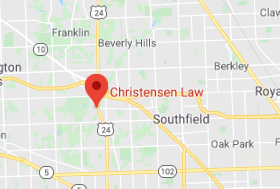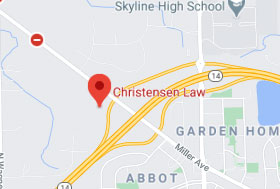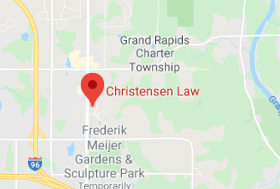Auto accident attorneys often talk about Third Party lawsuits against the at fault driver – in other words, the person who caused the accident. But what happens when it isn’t clear who is to blame for the car crash? What if both drivers were at fault?
Imagine this: Jane is driving her car down a 4-lane highway with a turn lane in the middle. She’s going pretty fast – over 10 miles per hour over the speed limit. As she crests a hill, Mark, driving his pickup truck, pulls into the left turn lane and immediately turns, T-boning Jane’s car on the driver’s side. Jane is seriously injured. She suffers broken bones, cuts, bruises, and a traumatic brain injury that leaves her unable to work. Who is the at fault driver?
At Fault Doesn’t Matter for No-Fault Insurance
As far as Jane’s no-fault insurance is concerned, the fact that she was speeding doesn’t matter. The Michigan No-Fault Act is designed to ensure that every motorist’s injuries are covered, regardless of fault. That means Jane’s medical expenses will be paid for, and she will be compensated for lost wages and attendant care services for up to three years.
Third Party Lawsuits, Fault, and Comparative Negligence
With such severe injuries, Jane is likely to need more help than those 3 years of benefits have to offer. She may be entitled to file a Third Party lawsuit against the at-fault driver. In that lawsuit, she will be able to seek damages for long-term disability, loss of income, pain, suffering, and other non-economic damages.
But will she get them? Remember that Michigan Third Party litigation is based on traditional negligence law. Her recovery depends on whether the other driver caused her injury.
So who did it?
Is Mark the at fault driver and to blame for the accident because he failed to yield to oncoming traffic? Or is Jane the at fault driver for driving above the posted speed limit? Does it matter that if she had been driving slower Mark would have passed harmlessly in front of her?
Michigan law resolves this question through the theory of “comparative negligence.” The jury will be asked to consider all the facts and assign a percent responsibility to each driver. So in this example, assume that the jury returned a verdict saying Mark was 70% responsible, but Jane was also 30% at fault. Comparative negligence requires Jane’s recovery to be reduced by the amount she was at fault.
For simplicity, say the jury valued all of Jane’s damages together at $1 million. That number would be reduced by 30% – the amount she contributed to the accident. So Jane would only be awarded $700,000.
Comparative negligence can significantly restrict the amount of Third Party damages an injured motorist receives. But the skilled auto accident attorneys at Christensen Law have decades of trial experience. They can present the facts to the jury to help them find a distribution of fault that you can live with.





